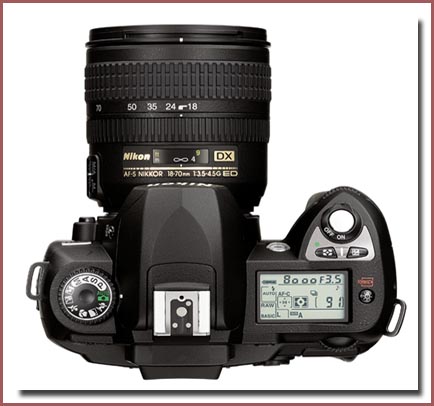
 |
 |
Nikon D70 Specs Released (January 28, 2004) |
 |
1. Introduction |  |
| 2. Update (January 28, 2004)* | ||
| 3. Specifications |
On January 28, 2004, Nikon released the specs of the D70 to stimulate the PMA crowds. The D70 contains Nikon's latest flash technology, i-TTL, and can shoot at 1/8000sec, 3 frames-per-second, for a total of 9 JPEG or 4 RAW images. Flash sync has been rated at 1/500sec, but this is only when using an external flash unit such as the SB-600 or SB-800. Internal flash sync is 1/60sec. These specs are certainly better than expected, and most likely are meant to grab any market share from Canon's 300D (Digital Rebel). The D70 aslo writes RAW + JPEG files. |
|||||||
Is the buffer much larger than the D100? |
|||||||
Well, it sort of depends. The D70 buffer writes up to 4 RAW + JPEG files, at 5.8MB per file (5.0MB RAW + .8MB JPEG Basic). However, the D70 does write 9 JPEG Fine images vs. the D100's 6 JPEG Fine images. The D70 and D100 both write up to 4 RAW files, but the D70 increases the JPEG Fine amount by 50%. |
|||||||
$1000 MSRP |
|||||||
The price of the D70 is certainly a good deal, when compared to Canon's 300D selling for about the same price, and even when compared to the D100. The D100 does have a few more features, (like the MB-D100 grip, and 10-pin accessories) but they are few, and I suspect we have many potential Nikon DSLR owners debating a D100 or D70 purchase. |
|||||||
Update (February 10, 2004) |
|||||||
A recently obtained D70 manual states that the D70 built-in flash does sync up to 1/500sec. I emailed Nikon USA and they are just as confused on the specs. Apparently, no one has the definitive say on whether the D70 can sync up to 1/500sec with its built-in flash. |
|||||||
Update (March 5, 2004) |
|||||||
Foreign D70 Users (i.e., Japan) are stating they can sync up to 1/500sec with the built-in flash. |
|||||||
|